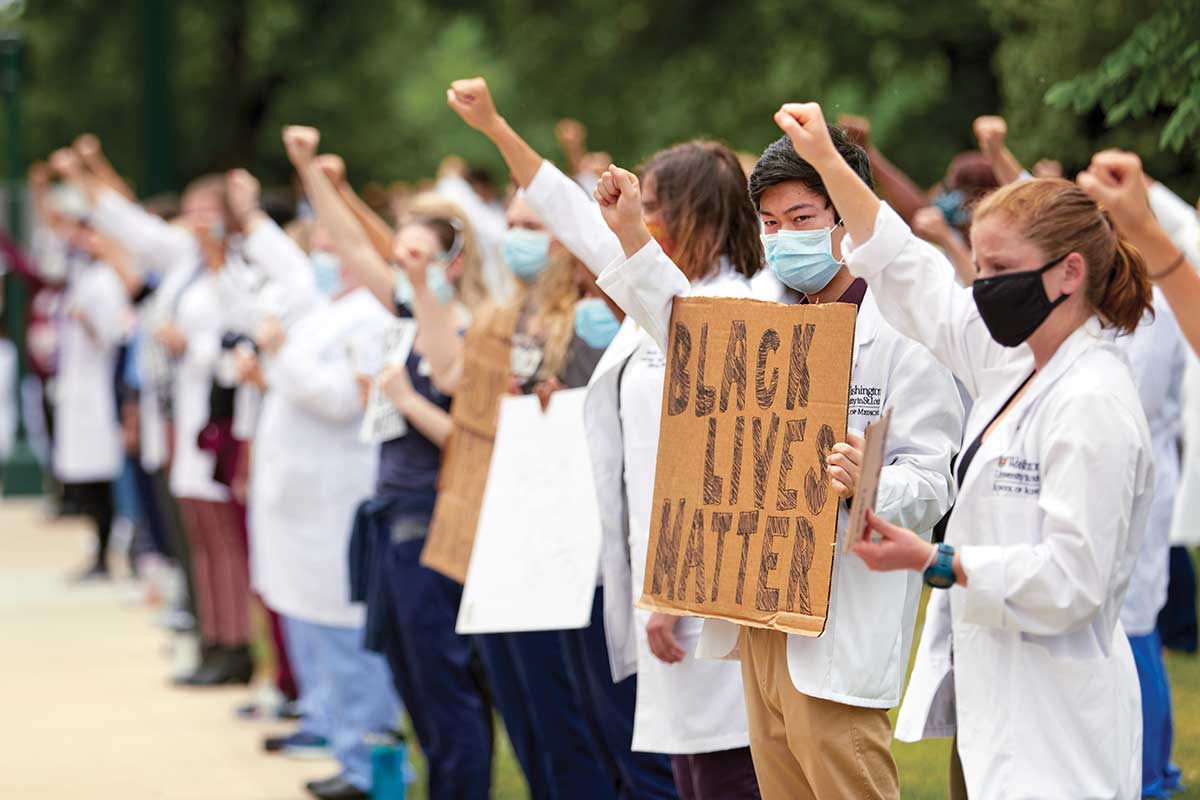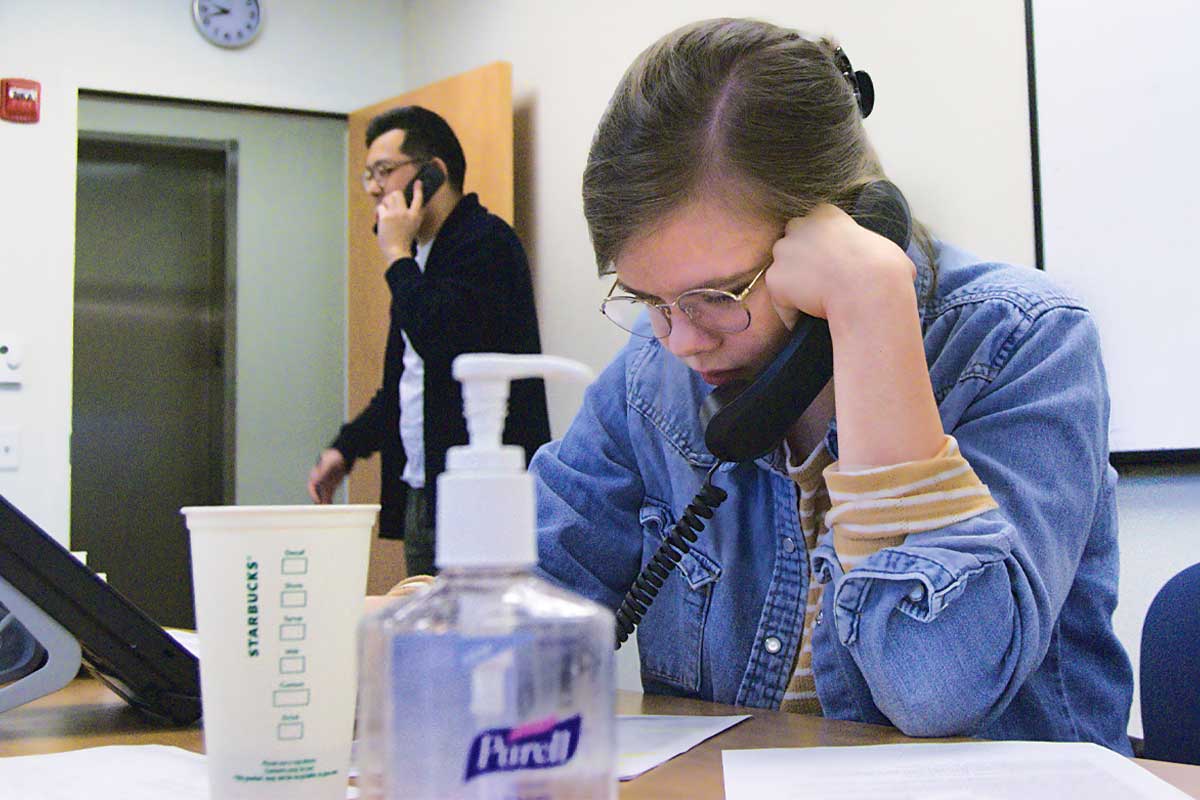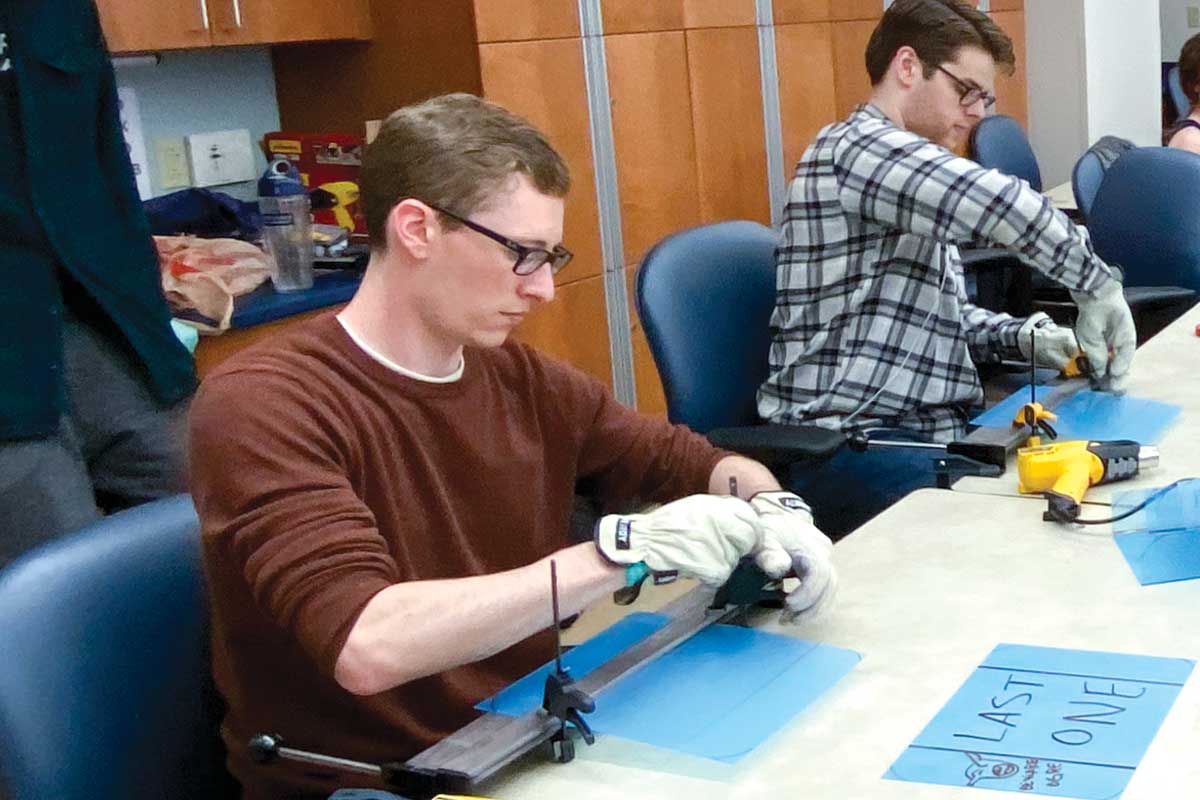
In the wake of George Floyd’s death in police custody, students organized a White Coats for Black Lives demonstration this summer on campus. Thousands of faculty, students and staff raised their voices, insisting racism is a pandemic, too.
After the March 11 announcement by Chancellor Andrew D. Martin restricting in-person academic instruction, many medical students wondered what to do. They had taken an oath committing to patient care and human health. As trainees, they lacked certification to help on the pandemic’s front lines. But many students found it unthinkable to remain on the sidelines as a worldwide health crisis escalated.
Two days after the announcement, three medical students issued a call to action via email and social media. Within 24 hours, more than 100 students had signed up to volunteer. Two weeks later, the number doubled.
Among the volunteer activities, students delivered meals to at-risk quarantined people and COVID-19 patients, provided child care for health-care workers, and created thousands of face shields and masks. They also assisted with contact tracing at area health departments and offered educational outreach to St. Louis’ African American and Latino residents, who are most at risk to COVID-19’s adverse effects. Overall, more than 12,000 student volunteer hours were recorded.
“As a student, it was empowering to be in useful roles during a time of great uncertainty.” — Bruin Pollard
“As a student, it was empowering to be in useful roles during a time of great uncertainty,” said Bruin Pollard, then a first-year medical student who initiated the call to action with Christopher Chermside-Scabbo and Cyrus Ghaznavi, then a fifth-year MD-PhD candidate and a second-year medical student, respectively. “One of the qualities of Washington University’s medical school that students appreciate is encouragement to engage with the community and to help those who are the most vulnerable.”
Addressing social and economic barriers to good health is the hallmark of the new curriculum, a continuous thread woven throughout students’ courses, lectures, research and clinical experiences.
From day one, students learn that patient care requires focusing on the whole person rather than a single illness or disease. This is because characteristics such as race, gender, sexual orientation, income and neighborhood can influence health outcomes — a phenomenon medical and social scientists refer to as social and structural determinants of health.
“Since the beginning, we’ve integrated the building blocks of basic science, ethics, community engagement, health-care systems, professional and public health, which has thoroughly enriched my understanding of holistic medical education” said Carly Duncan, a first-year student from Modesto, Calif. “The curriculum’s emphasis on teaching students to understand patient narratives, evaluate the impact of social and structural determinants of health, and practice trauma-informed care has opened my eyes on the importance of the physician-patient relationship and of examining medicine through compassionate lenses.”

To assist with the outbreak, medical students Sirui Ma (left) and Meg Landon perform contact tracing at the St. Louis County Department of Public Health.
An overarching goal of the new Gateway Curriculum is to improve the health of the St. Louis region and beyond by building upon existing community and university partnerships as well as creating new ones. Medical students accomplished this in March, shortly after area stay-at-home orders were issued to control the spread of COVID-19.
Then a first-year student, Austin Ibele worried whether coronavirus information existed in Spanish to alert the area’s Latino population about the lockdown. He felt dismayed when he found nothing on local government and health department websites.
After hours of scrolling social media feeds, Ibele eventually found a Spanish-language Facebook page named “STLJuntos,” which translates to “St. Louis Together.” The newly created page had few followers but offered updates on local stay-at-home mandates and links to the Centers for Disease Control and Prevention’s Spanish-language coronavirus page.
In less than a day, Ibele and other medical students had partnered with the two women who had created STLJuntos. All shared the same urgency to expand COVID-19-related outreach and educate the region’s Spanish-speaking communities.

Medical students Eric Balta (left) and Garrett Wahl manufacture reusable face shields to be placed over N95 or surgical masks. Students responded to a call to action from Victoria J. Fraser, MD, the Adolphus Busch Professor of Medicine and head of the Department of Medicine. At one point early in the pandemic, students made 1,600 masks in just three days, using plastic sheeting, cushion foam, elastic fabric and weatherproofing seal.
Throughout the U.S., underrepresented minorities living in low-income communities with limited access to health care represent a disproportionate number of COVID-19 cases and deaths. Social and economic conditions predispose them to higher rates of chronic obstructive pulmonary disease (COPD), diabetes, heart disease and other illnesses that aid the virus in weakening the body’s organs. In addition, social inequities in income, housing and jobs result in challenges with social distancing and quarantining, as well as access to care.
“Health disparities exist during normal times, and these inequities are compounded when something new comes along like coronavirus,” Ibele recalled. “That’s why it is extremely important to make sure all members of the public are educated.”
Student volunteerism to combat COVID-19 inspires Ian Marigi, a first-year from Brooklyn Park, Minn. — as does the Gateway Curriculum’s emphasis on eliminating health and racial inequities. Integrating social justice with science and medicine is one of the primary reasons why he wanted to attend Washington University.
“As an East African immigrant, I understand some of the obstacles that underrepresented minorities face in health care,” Marigi said. “COVID-19 has inflamed many of the health disparities that come with different personal identities. I’m excited to be at a medical school that acknowledges this reality and is active in addressing it.”
Published in the Winter 2020-21 issue





 Share
Share Tweet
Tweet Email
Email